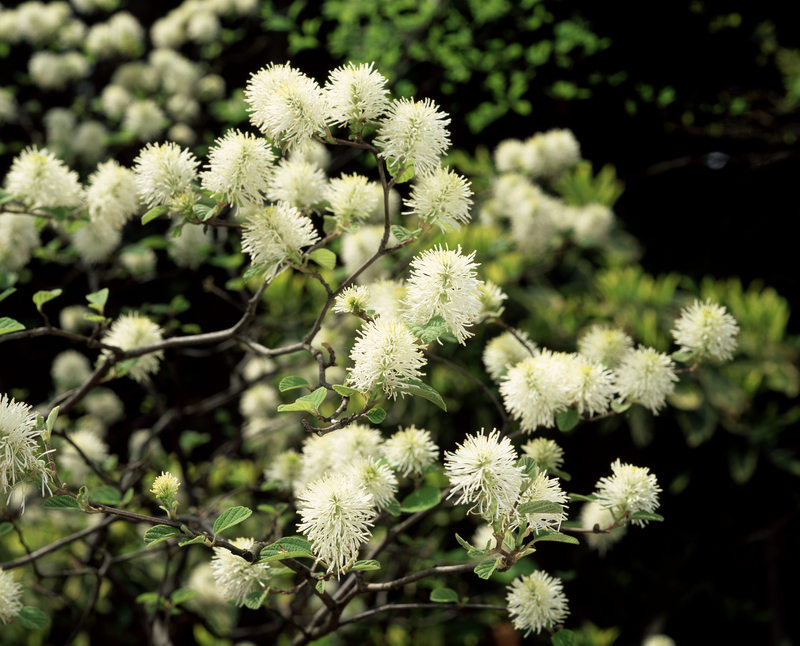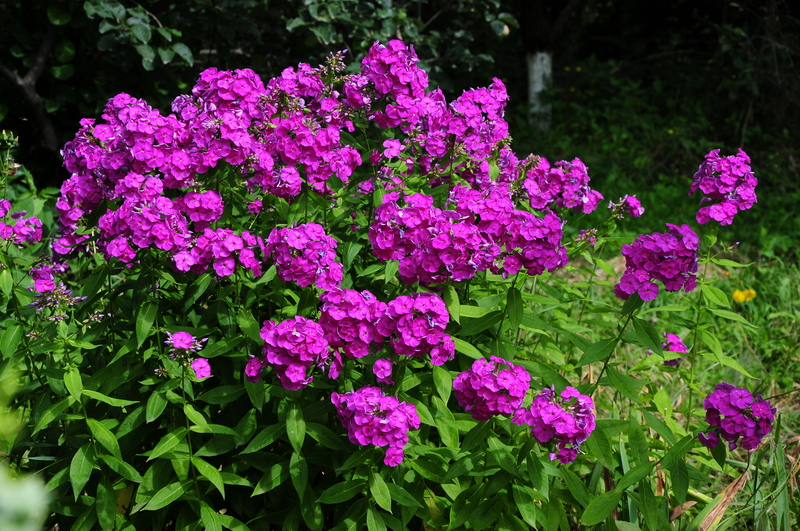From Seed to Sprout: Herb Garden Tips
Posted on 10/09/2025
From Seed to Sprout: Herb Garden Tips
Herb gardening is a rewarding and practical hobby that can enrich your kitchen, perfume your spaces, and even support your health. Whether you live in an apartment or have a large yard, growing herbs from seed to sprout is a journey anyone can undertake. This comprehensive guide will provide you with herb garden tips for every step of the process--from choosing quality seeds to harvesting fragrant leaves. Let's dive into the essential steps and secrets of cultivating a lush, productive herb garden.

Why Start an Herb Garden from Seed?
Starting your herb garden from seed offers numerous advantages over buying mature seedlings. Here's why:
- Wider variety: Seed catalogs offer a broader selection, including rare or heirloom herb varieties.
- Cost-effective: Seeds cost significantly less, especially when gardening on a budget.
- Stronger plants: Herbs grown from seed in your environment adapt better to local conditions.
- Control: You know exactly what's in your garden--no mystery pesticides or chemicals.
Whether seasoned or beginner, mastering the art of herb gardening from seed is a skill that pays back every season.
Choosing the Best Herbs for Your Garden
Success begins with the right selection. Some herbs are incredibly easy to grow from seed, while others may require extra care. If you're new to herb gardening, focus on these beginner-friendly varieties:
- Basil: Fast-germinating, perfect for warm climates.
- Cilantro (Coriander): Loves cool, bright conditions and grows quickly.
- Chives: Hardy and delicious, easy to start indoors or outdoors.
- Dill: Fast-growing, suitable for both garden beds and containers.
- Parsley: A little slow to germinate, but worth the wait for its culinary value.
- Mints: Vigorous and spreading--great for containers.
- Thyme and Oregano: Classic Mediterranean herbs loved for their resilience.
If you're feeling adventurous, try lavender, rosemary, or sage. Just be aware they may germinate slower and prefer specific conditions.
Pro Tip: Herb Garden Varieties and Companion Planting
Mixing different herbs can improve flavor, pest resistance, and even growth. For example:
- Basil can deter aphids from tomatoes.
- Chives repel carrot flies and aphids.
- Sage and rosemary thrive together in dry conditions.
How to Start an Herb Garden from Seed
Gather Your Supplies
Before you plant, assemble these herb gardening essentials:
- High-quality, fresh herb seeds
- Seed-starting trays or small pots (with good drainage)
- Seed-starting mix (light, sterile, and well-draining)
- Spray bottle (for gentle watering)
- Clear plastic dome or wrap (to maintain moisture)
- Grow lights or a sunny, south-facing window
- Labels or markers
Soil Preparation for Herb Seeds
Herbs thrive in loose, well-draining, nutrient-rich soil. For indoor starts, use a seedling mix that promotes healthy root development and prevents compaction. Outdoors, amend your garden bed with compost or organic matter, especially if your native soil is heavy or clay-like.
Tip: Avoid using heavy garden soil in pots, as this can stunt seedling growth.
Planting Seeds: Timing and Techniques
Proper timing ensures the best germination and establishment. Here's a quick reference:
- Start indoors: 6-8 weeks before your last frost date, especially if you live in a cold climate.
- Direct sow outdoors: Once soil has warmed and any frost danger has passed.
Steps to Plant Your Herb Seeds:
- Fill pots/trays with moistened seed-starting mix, tapping gently to remove air pockets.
- Sow seeds at recommended depth (check packet), usually 2-4 times the thickness of the seed.
- Lightly mist the top with water to avoid disturbing seeds.
- Cover trays with a plastic dome or wrap to keep humidity high while seeds sprout.
- Label your plantings for easy identification.
Light is critical. Most herb seeds don't need total darkness--once sprouted, provide 12-16 hours of bright light daily.
Supporting Herb Seedlings: Care and Troubleshooting
Watering Tips for Young Herbs
The secret to strong, healthy herb seedlings is consistent but gentle watering. Use a spray bottle to keep the surface just moist, not soggy. Overwatering leads to root rot and fungal diseases called "damping off." Allow the top inch of soil to dry slightly between waterings after seeds have germinated.
Providing the Right Light and Temperature
Place seedlings under fluorescent or LED grow lights, or in the sunniest window available. Rotate trays for even growth.
- Temperature: Most herbs sprout best at 65-75?F (18-24?C).
- Humidity: Remove covers once seeds have sprouted to prevent mildew.
Thinning and Transplanting Seedlings
Once seedlings have two sets of true leaves, thin them by gently snipping extras at soil level--this gives remaining sprouts room to grow. When seedlings are several inches tall and night temperatures are consistently above 50?F (10?C) outdoors, harden off your plants by setting them outside for increasing periods over 5-7 days before transplanting.
Planting Your Herb Garden: Indoors and Outdoors
Container Herb Garden Tips
Growing herbs in pots or containers offers flexibility and convenience, especially for balconies and patios. Here's how to succeed:
- Choose containers with drainage holes to prevent soggy roots.
- Use a high-quality, well-draining potting mix enriched with compost.
- Group similar herbs together (e.g., Mediterranean herbs like rosemary and thyme), as they share water and light needs.
- Gallons-size or larger containers reduce root crowding and require less frequent watering.
Position pots where they receive at least 6 hours of direct sunlight per day; a south- or west-facing location is ideal.
In-Ground Herb Garden Tips
Herb gardens look stunning right outside the kitchen door, or in dedicated raised beds. To get the most from your outdoor plot:
- Prepare soil by loosening to at least 8" and mixing in compost or well-rotted manure.
- Plan for mature sizes, spacing herbs 6-18" apart depending on variety.
- Mulch with straw or bark to retain moisture and suppress weeds.
- Plant perennial herbs (like mint, oregano, thyme) at bed edges, where they can spread without overtaking annuals.
Ongoing Herb Garden Maintenance
Feeding and Fertilizing Herbs
Herbs are light feeders. Too much fertilizer can dilute flavor and fragrance. Feed with a balanced, organic fertilizer or compost tea every 4-6 weeks during the growing season, or as foliage looks pale. Avoid high-nitrogen formulas, which encourage leafiness but reduce essential oil concentration.
Watering Established Herb Plants
- Water deeply and less frequently to promote strong roots.
- Let soil dry a bit between waterings--herbs dislike "wet feet."
- Morning watering is best to prevent fungal problems.
Pest and Disease Control for Herb Gardens
Herbs are generally pest-resistant, but watch for common issues:
- Aphids: Spray with water or neem oil.
- Powdery mildew: Space plants for airflow; avoid overhead watering.
- Slugs and snails: Use barriers like copper tape or handpick in the evening.
Tip: Harvesting leaves regularly also helps keep plants compact and healthy.
Harvesting and Using Your Homegrown Herbs
When and How to Harvest Herbs
The best time to pick herbs is just before flowering, when oils are most concentrated. Use sharp scissors or pruners, snipping above a leaf node to encourage branching.
- Harvest in the morning for peak flavor.
- Avoid removing more than a third of the plant at a time.
- Rinse leaves only if needed, then dry thoroughly.
Preserving Herbs: Drying, Freezing, and More
To enjoy your harvest all year, preserve extra herbs:
- Air dry sturdy herbs like rosemary, thyme, oregano by hanging bunches upside-down in a dry place.
- Freeze tender herbs like basil or cilantro, either chopped into ice cube trays with olive oil/water or whole leaves packed into bags.
- Infuse fresh herbs in vinegars or oils for creative kitchen uses.
Quick Troubleshooting Guide
| Problem | Likely Cause | Solution |
|---|---|---|
| Seedlings falling over ("damping off") | Overwatering, poor airflow | Reduce watering, improve ventilation, use sterile soil |
| Pale, leggy sprouts | Insufficient light | Move closer to light or add grow lights |
| Slow or patchy germination | Old seeds, cold soil | Start with fresh seeds, warm the soil, be patient |
| Leaf spots/yellowing | Fungal disease, root rot, overwatering | Improve drainage, water less, use disease-resistant varieties |

Frequently Asked Herb Gardening Questions
Which herbs are easiest to grow indoors?
Basil, chives, mint, and parsley all thrive in pots on a sunny windowsill. They adapt well to indoor life and can be snipped for salads and recipes all year round.
How long do herb seeds take to sprout?
The germination time depends on the variety but ranges from 5-10 days for basil and cilantro, 10-21 days for parsley, and two weeks or more for perennials like rosemary or thyme. Patience and consistent moisture are key!
How can I make my herbs more flavorful?
Stressing herbs slightly by withholding water or using lean soil (not too rich) can actually increase their oil concentration--and therefore, their flavor and aroma! Also, harvest in the morning when aromatic oils are at their peak.
Conclusion: Savor the Rewards of Your Herb Gardening Journey
Creating a thriving herb garden from seed to sprout is a journey rich with reward. The process connects you to the rhythms of nature, brings fresh flavor to your table, and transforms your home with vibrant greenery and scent. Remember to experiment, be patient, and enjoy the learning curve. With these herb garden tips, even first-time gardeners can cultivate a lush, productive patch--indoors or out. Happy growing!
Ready to start your own herb garden? Pick your favorite seeds, follow these steps, and savor the delight of fresh herbs at your fingertips!

